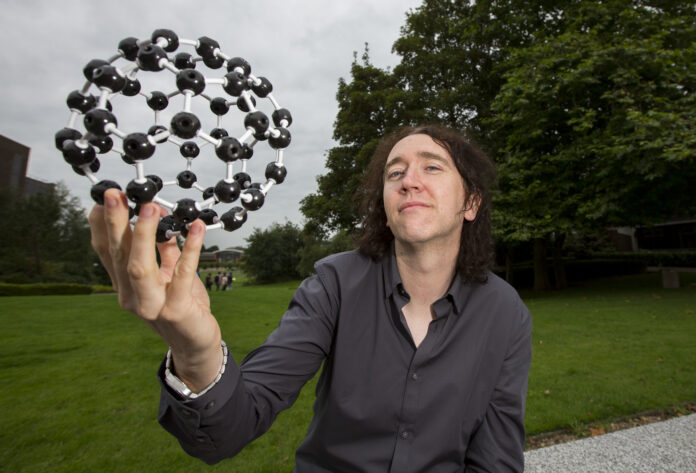RESEARCHERS at the University of Limerick have played a central role in the discovery of a new device to end overheating in portable devices and prolong battery lifetimes.
The Materials Modelling Group based in the Bernal Institute at UL have co-discovered a new type of molecular switch that could greatly reduce power consumption in electronic devices.
The finding has just been reported in the world-leading science journal Nature Materials and comes at a time when global consumer demand for ever lighter, more compact smartphones and tablets has never been higher – driving the discovery of new science and innovations at an astonishing pace.
Dr Damien Thompson, Associate Professor in Physics at UL who leads a research team in predictive materials design at the Bernal Institute, collaborated with Prof Christian Nijhuis at National University of Singapore and Prof Enrique del Barco of University of Central Florida to produce this new molecular-scale solution for high-density computing.
Dr Thompson predicted using computer modelling that the organic material used in the device can “double job” by acting as both a switch and memory storage.
“The engineered device is just two nanometres thick and provides an exciting new paradigm for creating electrical circuits. It works by combining both diode switch and memory element within the same single circuit component, which gives dramatic improvement in power consumption. The new device could replace the larger and more energy-hungry ‘one diode–one resistor’ architecture that connects a diode switch in series with a memory element,” Dr Thompson explained.
“Until now, molecular scale switches in electrical circuits were limited to just a single function and suffered from charge leakage, poor reproducibility and instability. The new dual-function switch removes these obstacles, by stabilising the molecule under the extremely high gigavolt-per-meter electric fields produced as charge flows through circuits,” he added.
This discovery of multiple functions all within a single molecule may help speed-up development of new technologies involving artificial synapses and neural networks.
The new molecular switch works by shuttling charged ions between the molecules and the device surface, in a manner analogous to voltage-gating ion channels evolved in cell biology, which is made possible by reversible, pairwise bonding of the molecules inside the device.





